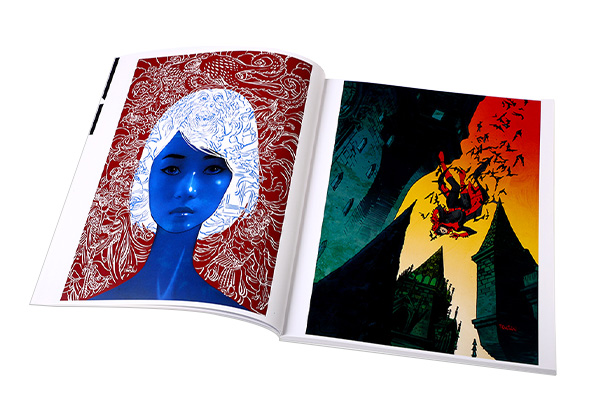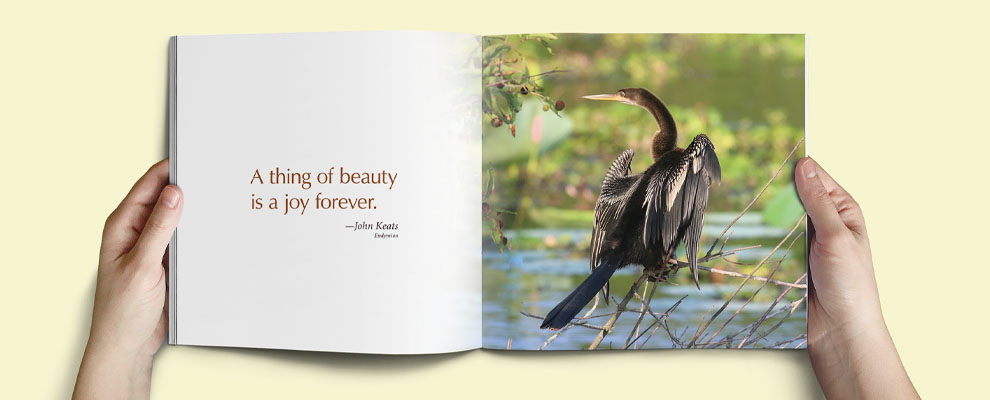The Hidden Truths Behind Successful art book Projects
Discover the Important Overview to Art Book Printing for Aspiring Artists and Publishers
As a hopeful musician or author, recognizing the nuances of art book printing is necessary to bringing your vision to life. What are the key aspects you should concentrate on to create a sensational art book that absolutely represents your work?
Comprehending Various Sorts Of Art Books
When you plunge into the globe of art books, you'll quickly discover that they come in various kinds, each customized to various imaginative expressions and target markets. Coffee table publications usually showcase spectacular visuals, best for laid-back browsing, while monographs dive deep into a specific musician's job, giving context and insights. If you want certain art movements, event magazines offer comprehensive paperwork of shows, featuring essays and reviews.
For educational purposes, art manuals and technique books guide you via various mediums and styles, making them important for aspiring musicians. Limited version or artist publications blur the lines between art and literary works, often incorporating one-of-a-kind style elements or hand-made functions. Comprehending these types aids you identify what resonates with you and what could best suit your target market. Each style offers its function, and knowing their differences can boost your art book trip.
Selecting the Right Paper and Materials
Selecting the best paper and products can greatly affect the general top quality and feeling of your art book. For vibrant colors and elaborate information, decide for a shiny surface or a heavyweight matte paper that enhances visual deepness.
Think of the weight of the paper, too. Thicker choices often lend an even more expert look, while lighter documents can minimize printing expenses. Don't ignore the binding products; a sturdy cover can shield your pages and include in the book's aesthetic.
Ultimately, consider sustainability. Environmentally friendly options are acquiring appeal and can reflect your values as a musician. By carefully picking your paper and products, you'll guarantee that your art book not only looks terrific however also really feels unique in the hands of your visitors.

Choosing the very best Printing Techniques
When it pertains to printing your art book, choosing in between balanced out and electronic printing can considerably influence your end product. You'll also desire to consider just how paper high quality influences the total look of your art work. Allow's check out these vital printing methods to find the ideal fit for your job.
Offset vs. Digital Printing
While both balanced out and digital printing have their benefits, choosing the ideal technique for your art book can considerably impact the end product. Countered printing offers high-grade images and lively colors, making it excellent for larger print runs. If you're looking to create hundreds or hundreds of duplicates, offset will provide you regular results and lower per-unit expenses. On the various other hand, digital printing excels for smaller sized amounts and quicker turnaround times. It enables for simple customization, enabling you to print unique duplicates without added arrangement expenses. Consider your spending plan, timeline, and the volume of your task. Ultimately, your selection ought to line up with your creative vision and circulation approach, making certain that your art book shows the quality you want.
Paper Top Quality Factors To Consider
Selecting the ideal paper high quality can considerably improve the visual appeal and responsive experience of your art book. Start by taking into consideration the weight and appearance of the paper. Much heavier paper commonly really feels even more elegant and can better display lively colors and intricate information. For prints, a shiny finish can make photos pop, while a matte surface offers a softer, more refined appearance. Do not ignore the paper's brightness; brighter sheets can boost color precision and comparison.
Next, think of the sustainability of your choice. Environment-friendly alternatives are ending up being increasingly preferred and can appeal to environmentally-conscious viewers. Finally, request examples to see just how different papers work with your art work, ensuring the last product shows your vision perfectly.
Making Certain Color Precision in Your Prints
To achieve sensational prints, you need to concentrate on shade accuracy from the begin. You'll wish to use shade calibration techniques to verify your display and printer are in sync. Furthermore, proofing your job prior to the final print run can aid catch any type of discrepancies, guaranteeing your art looks simply as you pictured.
Shade Calibration Strategies
Guaranteeing color accuracy in your prints starts with effective shade calibration methods that assist maintain uniformity in between your digital images and last published products. Next, select a color profile matched for your printing procedure, like CMYK for print materials. By consistently using these strategies, you'll improve the overall quality of your art prints and far better communicate your artistic vision.
Proofing for Accuracy
While you may believe your electronic images are all set for print, proofing is vital for attaining color precision. Prior to committing to a complete print run, always request an evidence from your printer.
If modifications are needed, interact plainly with your printer about your wanted outcomes. Do not hesitate to demand multiple evidence if necessary; it deserves the financial investment to obtain it right. Eventually, extensive proofing assurances that your art work is stood for as you imagined it, keeping go to my site your imaginative integrity throughout the printing procedure.

Creating Layouts That Enhance Your Art Work
When you create layouts for your art book, it's necessary to contemplate how each component interacts with your art work. Purpose for an equilibrium between visuals and text, ensuring neither overshadows the other. Use white room tactically; it gives your art work room to breathe and accentuates its information.
Consider the flow of your book. Prepare pictures in a manner that overviews the viewers's eye, creating a narrative or thematic development. art book. Vary the sizes and alignments of your artwork to maintain the design vibrant and fascinating
Select typefaces that match your artwork without distracting from it. Maintain message concise and appropriate, offering context or insight that improves the visitor's experience.
Ultimately, examination different layouts. Publish samples to see how the designs convert theoretically, and change as needed. By attentively developing your formats, you'll develop a visually interesting art book that reverberates with your audience.
Binding Alternatives for a Specialist End Up
Choosing the right binding option can considerably impact the overall discussion of your art book. You'll wish to consider both aesthetics and toughness when making your option. Popular alternatives consist of excellent Discover More Here binding, which supplies a smooth look and is perfect for thicker books; saddle sewing, suitable for smaller sized pamphlets; and spiral binding, which allows pages to lay level for easy watching.
If you're aiming for a premium feeling, situation binding is a superb option, providing a durable cover and description a specialist appearance (art book). Do not forget the cover material; options like fabric, natural leather, or a glossy finish can elevate your book's allure
Whatever alternative you pick, see to it it complements your artwork and improves the visitor's experience. Take your time to consider the pros and disadvantages of each method, so your end product shows the high quality of your innovative vision.
Preparing Your Declare Print Preparedness
To ensure your art book is print-ready, you'll require to pay very close attention to file preparation. Begin by establishing your document dimension to match your wanted print dimensions. Usage high-resolution pictures-- 300 DPI is the criterion-- to identify sharp, lively visuals. Transform your data to CMYK mode, as this color space is ideal for printing. Don't forget to consist of hemorrhage areas, usually an added 0.125 inches around your pages, to prevent any white edges after trimming.
Consider producing a proof to examine before the final print run. Complying with these steps will certainly aid you accomplish a refined, expert art book.
Regularly Asked Questions
What Is the Typical Cost of Printing an Art Book?
The standard cost of printing an art book differs, however you can anticipate to pay anywhere from $5 to $20 per duplicate, depending on variables like dimension, paper high quality, and printing quantity.
How Can I Find a Reliable Printing Firm?
To find a reliable printing firm, start by investigating online reviews and asking fellow artists for suggestions. Contrast quotes, inspect portfolios, and communicate your requirements plainly to assure they comprehend your vision and high quality assumptions.
What Is the Common Turnaround Time for Printing?
The normal turnaround time for printing varies however generally varies from one to 4 weeks. Elements like task complexity and volume can affect this. Constantly confirm with your chosen printer for particular timelines and expectations.
Can I Print My Art Book in Limited Quantities?
Yes, you can definitely publish your art book in restricted amounts. Several printing business offer short-run options, enabling you to generate simply the number you need, making it easier to manage costs and stock.
What Legal Considerations Should I Know for My Art Book?
You must think about copyright, licensing agreements, and version releases when producing your art book. Make certain you can make use of all pictures and message, securing on your own from potential legal issues later on.